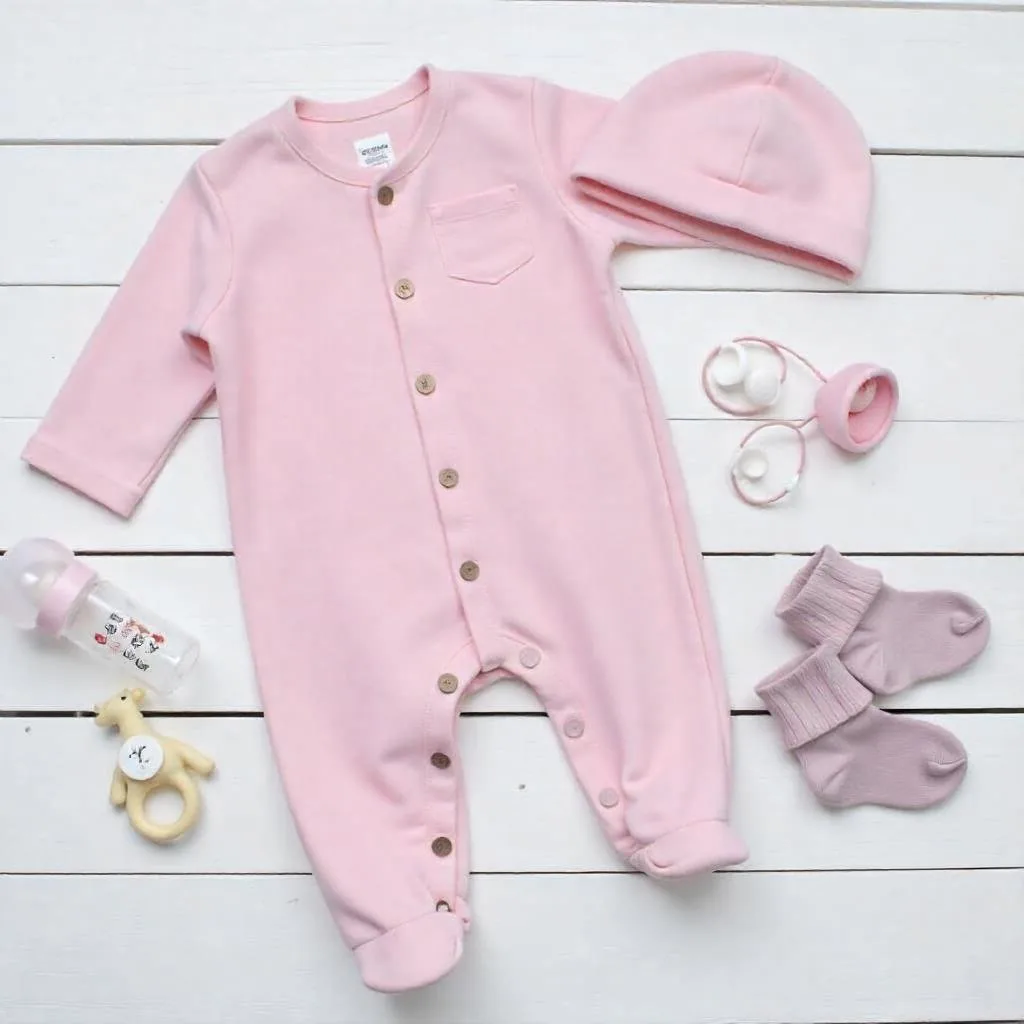From NICU-friendly designs to emotional support – everything you need to dress your tiny miracle with confidence
Table of Contents
- Introduction
- Understanding Preemie Sizes
- Selecting the Right Materials
- Design Features to Consider
- Clothing Types and Varieties
- Accessories for Preemies
- The Emotional Journey: First Clothes as a Milestone
- Cost Considerations and Budget Planning
- Advanced Closure Comparison
- Shopping for Preemie Clothing
- Seasonal and Environmental Considerations
- Care and Maintenance
- Frequently Asked Questions
- Conclusion
Finding the right clothes for a premature baby can feel overwhelming during an already stressful time. Preemie clothing isn’t just smaller versions of regular baby clothes – they’re specially designed to fit smaller bodies while addressing the unique needs these tiny babies have. When shopping for preemie clothes, you’ll want to look for soft, stretchy fabrics with easy access openings that accommodate medical equipment and simplify skin-to-skin contact.
“As a pediatrician in the nursery and NICU, I am very intentional about offering families the opportunities to clothe their babies, inviting them to initiate skin-to-skin, kangaroo care and helping to empower them. Something as simple as being able to dress your preemie can be a significant memory for a family.” – Dr. Jess Daigle, MD, FAAP
Preemie sizes typically range from Micro Preemie (1-3 lbs) to Preemie (3-6 lbs), with some brands offering Teeny (2-4 lbs) options in between. Front or shoulder openings are essential features to look for, as they make dressing easier and support kangaroo care sessions. These special openings also help parents work around any tubes or monitors their baby might need in the NICU.
Key Takeaways
- Choose preemie clothes with front or shoulder openings to facilitate skin-to-skin contact and accommodate medical equipment.
- Look for ultra-soft, stretchy fabrics that are gentle on sensitive and delicate skin.
- Consider specialized items like side-snap bodysuits, adaptive gowns, and adjustable wraps designed specifically for premature babies’ needs.
- Budget for 2-3 essential items initially, as preemies grow quickly and may outgrow clothes within weeks.
- Understand that the first outfit milestone represents progress and emotional healing for families.
- Use our preemie clothing checklist generator to create a personalized shopping list based on your baby’s current NICU stage and weight.
Understanding Preemie Sizes
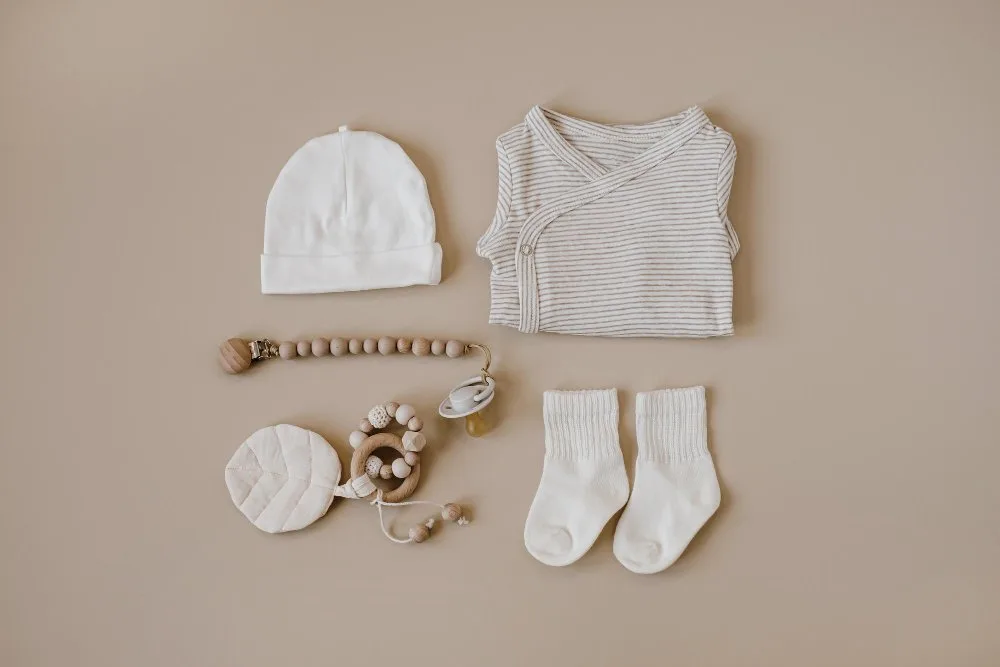
Preemie clothing comes in various size ranges based on a baby’s weight and length. Knowing the different size categories helps parents find appropriate clothing that provides comfort and proper fit for their premature infant.
Navigating Preemie to Newborn Sizes
Preemie sizes typically range from Micro Preemie (1-2.5 pounds) to Preemie (3-6 pounds) to Take Me Home (5-8 pounds). Micro-preemies need specialized clothing that’s extremely small, often measuring only 7.5-8.5 inches long and 5.5 inches wide.
| Size Category | Weight Range | Length Range | Typical NICU Stage | Common Features |
|---|---|---|---|---|
| Micro Preemie | 1-3 lbs | 7.5-12 inches | Extended NICU stay | Side/shoulder openings, minimal seams |
| Teeny | 2-4 lbs | 12-15 inches | Mid-stage NICU | Easy access, fold-over cuffs |
| Preemie | 3-6 lbs | 15-17 inches | Preparing for discharge | More variety, comfort features |
| Newborn | 5-8 lbs | 17-21 inches | Going home | Standard baby features |
Teeny Preemie sizes fit babies weighing 2-4 pounds, with garments about 12.5 inches long. Standard Preemie clothes generally fit infants between 3-6 pounds and up to 17 inches long.
When shopping for preemie clothes, checking each brand’s specific size chart is recommended. Some brands label smaller preemie sizes as “P” or “Preemie,” while others use “Micro Preemie” or “Teeny.”
The transition to newborn sizes usually happens when babies reach 5-8 pounds. Most babies will grow out of preemie clothes within a few weeks or months.
The Importance of Proper Fit for Preemies
Properly fitting clothes are crucial for preemie babies’ comfort and development. Clothes that are too large can bunch up, causing skin irritation and discomfort. They may also interfere with medical equipment in the NICU.
Essential Features for Preemie Clothes:
- Front openings for easy dressing
- Flat seams to prevent skin irritation
- Snap or velcro closures instead of buttons
- Sleeve openings that accommodate IV lines
- Footless designs for medical monitoring
Proper fit helps regulate body temperature, which is essential since preemies often struggle with temperature control. Well-fitting clothes also reduce stress during dressing and changing.
When selecting preemie clothes, prioritize function over fashion. Simple designs with easy access for medical care and diaper changes are best for these tiny babies.
To help you navigate these different stages and ensure you have everything you need, try our customizable preemie clothing checklist that creates personalized shopping lists based on your baby’s specific weight and NICU stage.
Selecting the Right Materials
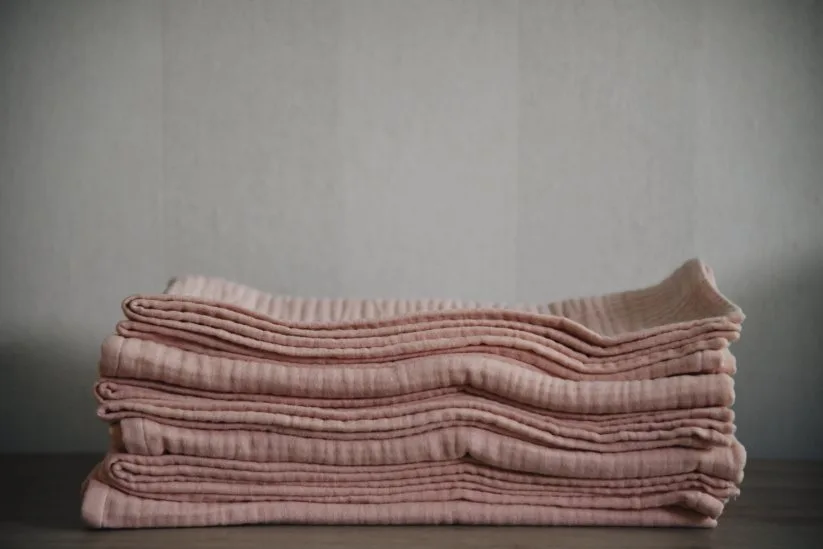
The fabric chosen for preemie clothing directly impacts a baby’s comfort and health. Material selection is especially important for premature babies whose skin is more delicate and sensitive than full-term infants.
The Benefits of Organic Cotton
Organic cotton stands out as an excellent choice for preemie clothing. This material is exceptionally soft and gentle on a newborn’s sensitive skin.
Unlike conventional cotton, organic cotton is grown without harmful pesticides or chemicals. This makes it less likely to cause skin irritation or allergic reactions in premature babies.
The breathable nature of organic cotton helps regulate body temperature. This is crucial for preemies who often struggle with temperature control.
Many organic cotton preemie clothes are also pre-washed, which means they’re extra soft right from the start. Look for GOTS (Global Organic Textile Standard) certification to ensure the highest quality.
Advanced Fabric Options for Preemies
Bamboo Fabric
Benefits: Ultra-soft, naturally antibacterial, moisture-wicking
Best for: Sensitive skin, temperature regulation
Cost: $15-25 per piece
Organic Cotton
Benefits: Chemical-free, breathable, durable
Best for: Daily wear, NICU environment
Cost: $8-18 per piece
Cotton Blends
Benefits: Stretch, easy care, affordable
Best for: Budget-conscious families
Cost: $5-12 per piece
Avoiding Irritants for Sensitive Skin
Preemies have extremely delicate skin that can be easily irritated by certain materials and chemicals. Avoiding clothes with rough seams, tags, or embellishments that might rub against skin is recommended.
Stay away from fabrics treated with flame retardants, formaldehyde, or other harsh chemicals. These substances can trigger reactions on sensitive skin.
Dyes can also cause irritation, so look for clothes colored with azo-free or natural dyes. For parents considering what fabric is best for children’s clothing, organic options consistently perform best for premature babies.
Cotton-blend fabrics can work well too, especially those with a high percentage of cotton mixed with a small amount of stretchy material. This combination provides softness while making it easier to dress babies.
Wash all new clothes with baby-safe detergent before putting them on preemies to remove any residual chemicals from manufacturing.
Design Features to Consider
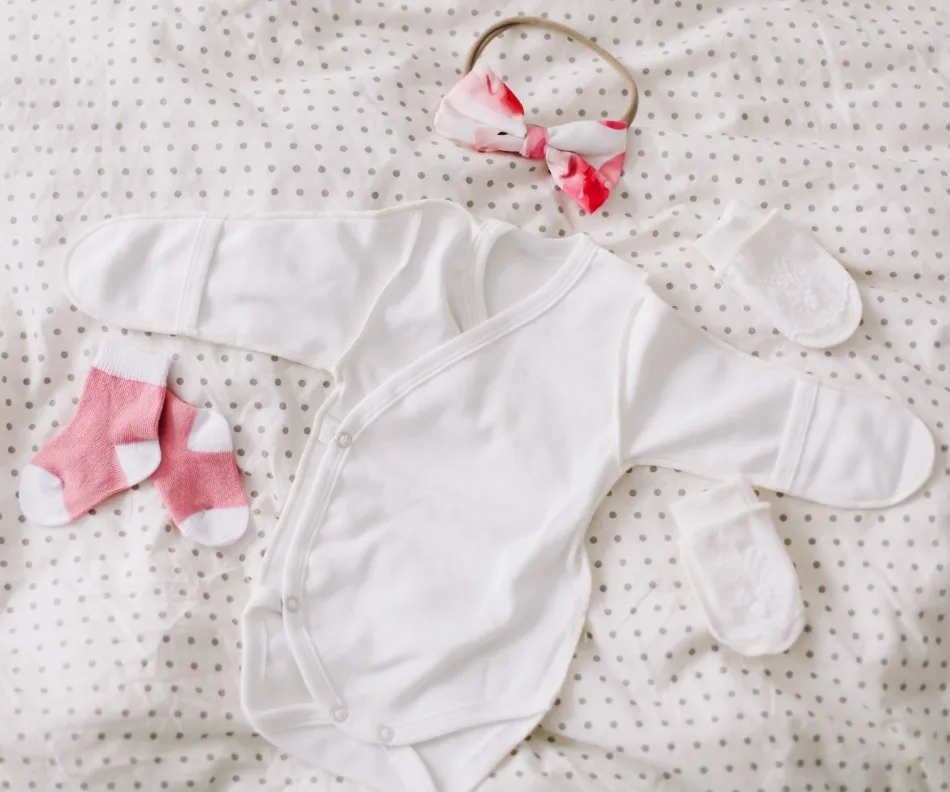
When shopping for preemie clothes, specific design elements can make a big difference in comfort and practicality. These features address both the unique needs of premature babies and the practical challenges faced by parents and medical staff.
Accessibility and Convenience
Easy front access is essential for preemie clothing. Look for garments with full-front openings that use hook-and-loop closures or snaps instead of buttons. These fasteners make dressing easier when working around medical equipment.
Open shoulders or envelope necklines allow clothes to be put on without lifting the baby or disturbing medical monitors. This design is particularly helpful when babies have IVs or monitoring equipment attached.
Fold-over cuffs on sleeves and pants serve multiple purposes. They prevent scratching while also allowing for growth adjustments as preemies gain weight. Many brands now include these convertible cuffs as standard features.
Footless designs are preferable for tiny babies. They allow for easier temperature regulation and provide access for medical monitoring of feet and toes.
NICU-Friendly Apparel
NICU-friendly clothing considers medical equipment access. The best options have strategic openings for tubes, wires, and monitors without requiring complete undressing during medical checks.
Plastic snaps rather than metal ones are safer for NICU environments. They won’t interfere with medical imaging and are gentler against delicate skin. Some brands specifically advertise their “NICU-friendly” snap placement.
Simple, flat seams prevent pressure points on sensitive skin. Examining all preemie clothes for minimal seams is recommended, especially in areas that might press against the baby when lying down.
Material matters tremendously in the NICU. Soft, breathable fabrics like cotton are ideal. Many specialized preemie clothing lines now use extra-soft materials specifically designed for premature babies’ sensitive skin.
To compare how different brands incorporate these NICU-friendly features, use our interactive brand comparison tool that shows which brands offer specific features like velcro closures, organic options, and micro preemie sizes.
Advanced Closure Comparison
The type of closure on preemie clothing significantly impacts both comfort and functionality. Understanding the differences helps parents make informed choices for their baby’s specific needs.
| Closure Type | NICU Suitability | Ease of Use | Skin Comfort | Best For |
|---|---|---|---|---|
| Velcro | Excellent | Very Easy | Good (if positioned away from skin) | Frequent changes, medical access |
| Plastic Snaps | Excellent | Easy | Excellent | Daily wear, MRI-safe |
| Magnetic Closures | Poor | Very Easy | Excellent | Home use only |
| Zippers | Fair | Moderate | Fair | Sleepwear, home use |
“This gown has been a game-changer. The velcro closures at the arms and center make dressing and undressing our preemie so much easier as we help with the care times, especially with all the wires and monitor connections.” – Parent testimonial
The Emotional Journey: First Clothes as a Milestone
The emotional significance of dressing a preemie for the first time is often underestimated. For many parents, this moment represents hope, progress, and a step toward normalcy during an overwhelming experience.
Understanding the Psychological Impact
Parents report that being able to dress their premature baby feels like reclaiming part of their parenting role. In the NICU environment, where medical professionals handle most care, clothing becomes a way for parents to nurture and care for their child.
“Before our NICU experience, I never thought my babies’ first piece of clothing would be considered a milestone. I had thought about finding a special outfit for leaving the hospital. But I never thought I would be so emotional over a tiny white cotton button-up sleeper until the day I arrived at the NICU and saw my babies in clothing for the first time.”
When a NICU baby is finally allowed to wear clothes, it signals that they’re getting better, growing, and requiring less medical intervention. It means parents can participate in basic care activities and feel like “normal” parents for brief moments.
Creating Positive Memories
Many parents keep their baby’s first NICU outfits as keepsakes. These tiny clothes become symbols of survival, growth, and the family’s journey through challenging times.
Choosing special first outfits, even simple ones, can provide emotional benefits for both parents and babies. The act of shopping for these clothes can offer hope and positive focus during stressful times.
Supporting Parents Through Clothing Choices:
- Acknowledge that clothing choices have emotional significance
- Consider gifting preemie clothes as meaningful gestures of support
- Document first outfit milestones with photos
- Choose quality pieces that can become keepsakes
Healthcare providers often encourage family involvement in clothing decisions, as this participation can improve bonding and reduce feelings of helplessness that many NICU parents experience.
Cost Considerations and Budget Planning
Preemie clothing costs can vary significantly, and understanding budget considerations helps families make informed purchasing decisions during an already expensive time.
Price Range Overview
Budget-Friendly Options ($3-8 per piece)
- Carter’s basic preemie line
- Gerber essentials
- Generic hospital-approved basics
Mid-Range Options ($8-18 per piece)
- Organic cotton brands
- NICU-specialized manufacturers
- Bamboo fabric options
Premium Options ($18-35 per piece)
- Luxury organic brands
- Specialty adaptive clothing
- Custom or handmade items
Smart Shopping Strategies
Preemie Clothing Budget Planning
Planning your preemie clothing expenses? Our preemie clothing budget calculator helps you determine how much to spend and provides prioritized recommendations within your specific price range.
Insurance and Financial Assistance
Most health insurance plans don’t cover clothing costs, but some NICU social workers can provide information about assistance programs. Some hospitals have clothing donation programs for families in need.
Consider that preemie clothes have good resale value due to limited use time. Many parents pass clothes between families or sell them online to recoup some costs.
Cost-Effectiveness Tips
- Buy only 2-3 pieces initially to assess fit and needs
- Prioritize versatile pieces that work for multiple situations
- Consider gift cards to allow flexible shopping timing
- Join parent groups for clothing swaps and recommendations
- Focus spending on NICU-specific features rather than decorative elements
Clothing Types and Varieties
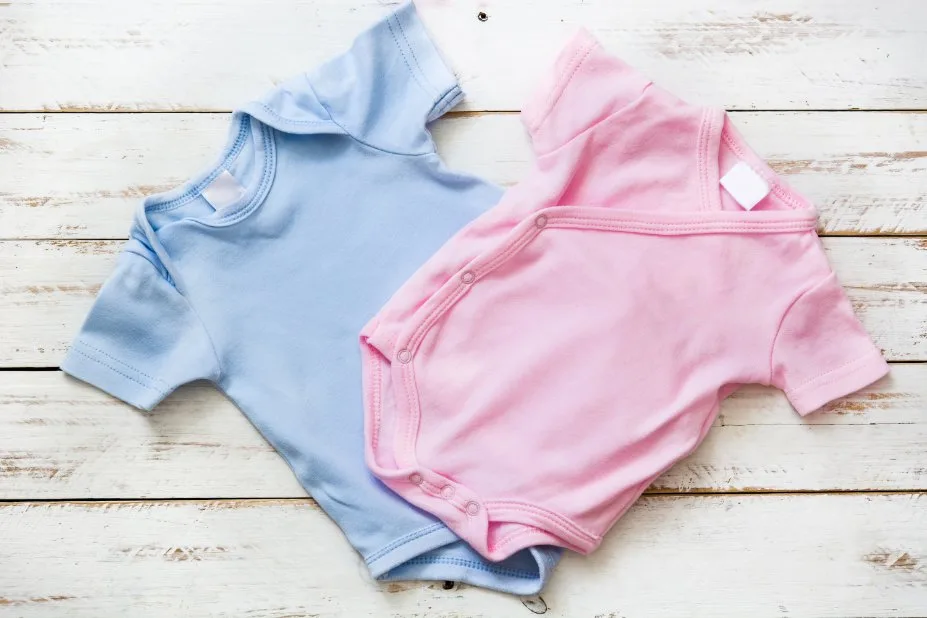
Preemie babies need special clothing that fits their tiny bodies while providing comfort and easy access for medical care. The market offers several options designed specifically for premature infants who may weigh as little as 1-3 pounds.
Bodysuits and Gowns Essentials
Bodysuits (also called onesies) are the foundation of a preemie’s wardrobe. Look for those with front or side snaps rather than those that pull over the head. These make dressing easier and cause less stress for little ones.
Preemie gowns deserve special attention. These open at the bottom, allowing for diaper changes without completely undressing babies. This feature is particularly helpful when babies have monitoring wires or IV lines.
Footless options work best for many preemies. Their tiny feet often don’t fill standard footies, and footless designs allow for growth and easier temperature regulation.
Many brands now offer organic bodysuits and gowns. These are made without harsh chemicals or pesticides, which is gentler on sensitive skin.
What Clothes Do Premature Babies Need?
Essential Preemie Clothing Items by Stage:
Micro Preemie Stage (1-3 lbs):
- 2-3 side-snap gowns
- 2-3 hats for temperature regulation
- Soft mittens to prevent scratching
- Simple footless bodysuits
Preemie Stage (3-6 lbs):
- Front-opening sleepers
- Kimono-style tops
- Sleep sacks for comfort
- Going-home outfit
Swaddles and Sleep Sacks for Comfort
Swaddles are essential for preemie comfort. They mimic the womb environment and can reduce stress. Look for stretchy, lightweight fabrics that won’t overheat babies.
Preemie-specific swaddles are better than standard sizes, which may be too large and create unsafe loose fabric. Many have Velcro closures for secure wrapping.
Sleep sacks provide a safe alternative to blankets. The best preemie sleep sacks have two-way zippers for easy diaper access and adjustable closures around the arms.
Some sleep sacks come with swaddle wings that can be used initially and then removed as babies grow. This convertible feature offers good value as preemies develop.
When shopping, look for bundles that include bodysuits, gowns, and swaddles together, often at a better price than purchasing separately.
Accessories for Preemies
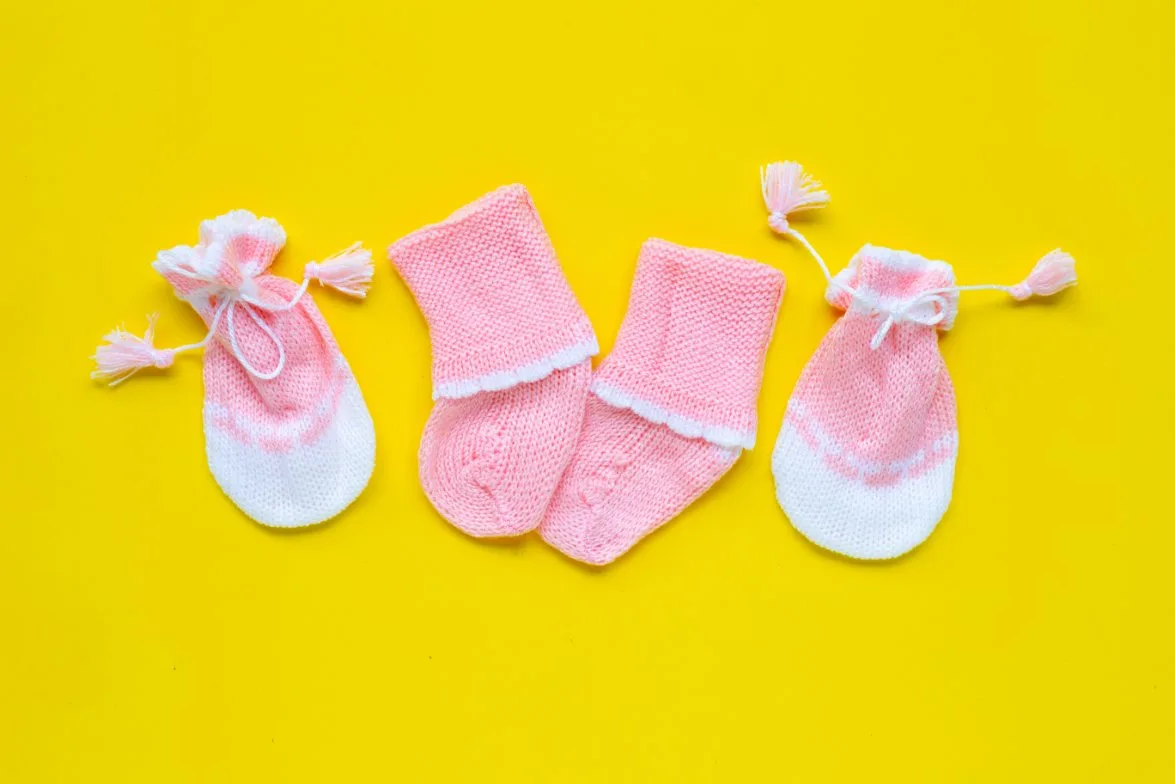
Beyond clothing, preemies need specialized accessories designed for their tiny size and unique needs. These items provide essential warmth and protection during this vulnerable stage.
Hats and Booties for Warmth
Preemie hats are essential as babies lose significant heat through their heads. Ultra-soft beanies made from cotton or bamboo that won’t irritate sensitive skin are recommended.
Look for preemie-specific hats with circumferences between 5-10 inches. Many NICU-friendly options feature adjustable designs that grow with babies.
Booties keep tiny feet warm while allowing for proper circulation. The best preemie booties have stretchy cuffs that stay in place without being too tight.
Some booties come with non-slip grips, though these aren’t necessary for NICU babies. Washable materials are ideal since these items may need frequent cleaning.
Mittens and Scratch Protection
Preemie mittens serve a crucial protective function. Babies often have sharp little nails and reflexively touch their faces, which can lead to scratches.
Choose mittens with gentle elastic at the wrist that keeps them in place without restricting circulation. Cotton mittens are breathable and comfortable.
Some preemie clothes come with built-in fold-over cuffs that can function as mittens. These integrated options can be convenient in the NICU setting.
When selecting scratch protection, ensure the material is thin enough for movement but effective at preventing scratches. Mittens should be easy to remove for regular hand checks and cleaning.
Shopping for Preemie Clothing
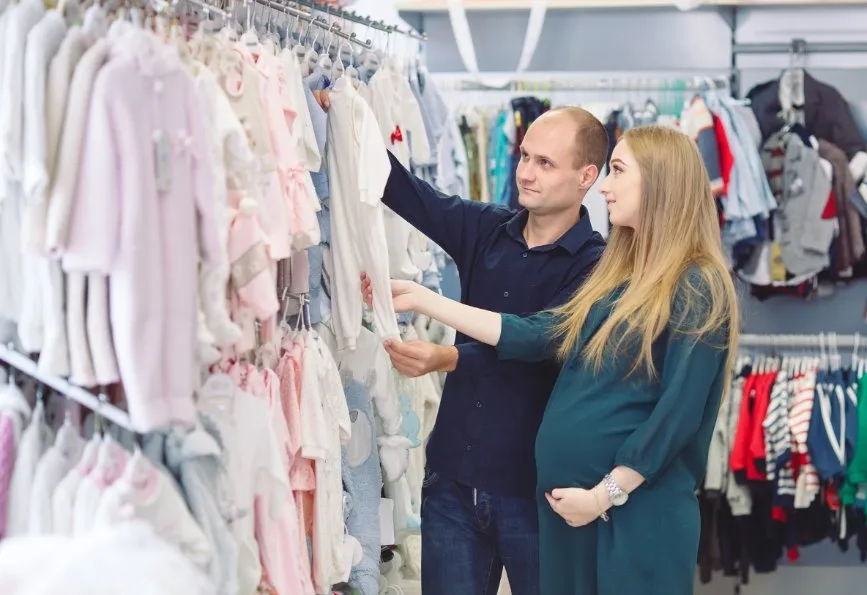
Finding the right clothing for premature babies requires knowing where to shop and which brands offer quality options. Parents need to consider size ranges, fabric quality, and NICU-friendly features when selecting stores and brands.
Finding the Best Preemie Clothes Brands
When looking for preemie clothes brands, focus on those that offer specialized sizing systems. Brands that provide micro-preemie (1-3 lbs), teeny (2-4 lbs), preemie (3-6 lbs), and newborn (5-8 lbs) categories will best accommodate baby growth. For a detailed side-by-side analysis, check out our comprehensive preemie clothing brand comparison tool that lets you filter brands by your specific needs and priorities.
The Preemie Store
Specialization: NICU-friendly designs since 1993
Size Range: Micro to Take-Me-Home
Price Range: $4.95 – $25
Best For: Medical equipment access
Carter’s
Specialization: Affordable basics
Size Range: Up to 5 lbs, Up to 6 lbs
Price Range: $7 – $15
Best For: Budget-conscious families
Perfectly Preemie
Specialization: Innovative NICU designs
Size Range: 1 lb – 8 lbs
Price Range: $3.95 – $30
Best For: Specialized medical needs
For an interactive comparison experience with filtering options, visit our brand comparison matrix to explore detailed features, ratings, and recommendations.
Do You Need to Buy Preemie Clothes?
Whether you need preemie clothes depends on several factors:
- Baby’s current weight: Babies under 5 lbs typically need preemie sizes
- NICU stay length: Extended stays may require more specialized clothing
- Medical needs: Babies with extensive monitoring need adaptive features
- Growth rate: Fast-growing babies may quickly outgrow preemie sizes
Important: Always consult with NICU staff before bringing clothes. Some babies may not be ready for clothing due to medical conditions or equipment needs.
Do Hospitals Provide Preemie Clothes?
Most hospitals provide basic clothing items, but families often prefer to bring their own for several reasons:
- Personal connection and bonding
- Better fit for specific baby sizes
- Softer, higher-quality materials
- Keepsake value for milestone moments
Hospital-provided clothes are typically basic gowns or simple bodysuits designed for functionality rather than comfort or style.
Choosing the Right Store
Amazon stands out as a top recommendation due to its fast delivery, wide selection, and free shipping for Prime members. This is especially helpful when clothes are needed quickly.
Target offers a good selection of affordable preemie basics both online and in-store. Specialized Preemie Stores often provide the most comprehensive selection with staff who understand NICU needs.
Shopping Tips:
- Check return policies (babies grow quickly!)
- Buy in small quantities as sizes change rapidly
- Look for stores that offer gift cards so friends and family can help
- Read reviews from other NICU parents
- Consider shipping times if shopping online
Before you start shopping, consider using our budget planning tool to get personalized spending recommendations and prioritized item suggestions that fit your family’s financial situation.
Online shopping tends to provide more options than physical stores. Always look for retailers that clearly describe their sizing measurements rather than just labeling items “preemie.”
UK Shopping Options
For families in the UK, several retailers offer preemie clothing:
- Primark: Basic preemie options at budget prices
- ASDA: Limited selection but affordable basics
- Tesco: Online preemie clothing available
- Specialized UK retailers: Offer NICU-friendly designs with faster local shipping
Seasonal and Environmental Considerations
The season and environment where your preemie will spend time affects clothing choices. NICU environments, home temperatures, and seasonal weather all play roles in selecting appropriate clothing.
NICU vs. Home Environment
NICU environments are typically kept at consistent temperatures between 72-78°F with controlled humidity. This means lighter clothing is often appropriate in the hospital setting.
Home environments can vary more dramatically, requiring parents to adjust clothing choices based on their specific heating and cooling systems.
How to Dress Preemie at Night
Nighttime dressing for preemies requires special consideration:
- Temperature regulation: Use lightweight sleep sacks rather than blankets
- Easy access: Choose gowns that open from the bottom for diaper changes
- Comfort: Soft, breathable fabrics prevent overheating
- Safety: Avoid loose items that could pose suffocation risks
How to Dress a Preemie in the Summer
Summer considerations for preemie clothing include:
Summer Dressing Guidelines:
- Choose lightweight, breathable fabrics like cotton
- Avoid synthetic materials that trap heat
- Use minimal layers – a light onesie may be sufficient
- Protect from sun exposure with appropriate covering
- Monitor for signs of overheating
How Many Layers Should a Preemie Wear?
The general rule is to dress preemies in one more layer than what adults find comfortable. However, this can vary based on:
- Baby’s weight and body fat
- Environmental temperature
- Activity level
- Individual temperature regulation ability
Always check with healthcare providers about appropriate layering for your specific baby’s needs.
Care and Maintenance
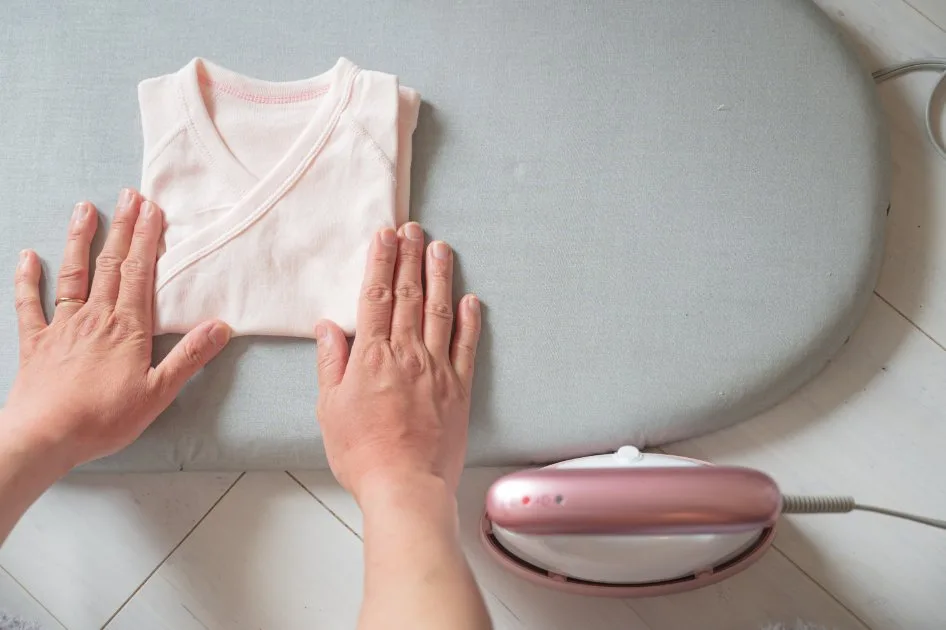
Proper care of preemie clothing helps them last longer and keeps them safe for sensitive skin. Establishing good cleaning and storage routines makes managing a preemie wardrobe much easier.
Washing Instructions for Longevity
Always wash preemie clothes before their first use. Use a mild, fragrance-free detergent specifically designed for babies to avoid irritating delicate skin. Wash preemie clothing separately from regular laundry to prevent exposure to harsh detergents.
Set the washing machine to a gentle cycle with warm (not hot) water. Hot water can shrink these tiny garments and break down elastic components faster.
Avoid using fabric softeners or dryer sheets, as they contain chemicals that may cause skin irritation. Instead, add a quarter cup of white vinegar to the rinse cycle as a natural fabric softener.
Air-drying is best for preserving preemie clothing, but if using a dryer, select the lowest heat setting.
Storing Preemie Clothes
Keep preemie clothes in clean, dry containers to protect them from dust and moisture. Clear plastic bins work well because they let you see what’s inside without opening them.
Label each container by size or type of clothing for easy access. This organization helps when you’re sleep-deprived and need to find something quickly.
If storing clothes for future use or another baby, make sure they’re completely clean and dry before packing them away. Consider adding silica gel packets to absorb moisture and prevent mildew.
Fold items neatly rather than hanging them, as tiny preemie clothes can lose their shape on hangers. For special outfits or keepsakes, wrap in acid-free tissue paper to prevent yellowing over time.
Frequently Asked Questions
Should I purchase special clothes for a premature baby?
Yes, special preemie clothes are recommended for babies born prematurely. Regular newborn clothes will typically be too large and may pose safety risks for tiny babies.
Many premature babies have special medical needs that require easy access for monitoring and treatments. Preemie-specific clothing is designed with these considerations in mind.
However, your need for preemie clothes may depend on your baby’s hospital stay length. Some preemies approach average newborn size by discharge time.
What are the key differences between newborn and preemie clothing sizes?
Preemie clothing is significantly smaller than standard newborn sizes in all dimensions. The sleeves, legs, and torso are shorter to fit properly.
Preemie clothes typically have more accessible openings for medical equipment and easier diaper changes. They often feature front closures rather than over-the-head designs.
The necklines are usually more adjustable to accommodate equipment while preventing fabric from bunching around the face.
What weight range do preemie clothes typically accommodate?
Preemie clothes are generally designed for babies weighing less than 5 pounds (2.2 kg). This matches the medical definition of low birth weight.
Some brands offer further size distinctions, with micro-preemie options for babies under 3 pounds and standard preemie for 3-5 pound babies.
Always check the specific manufacturer’s sizing chart, as there can be variations between brands.
How can I determine the correct size of clothing for a premature infant?
The most reliable method is to check your baby’s current weight and length against the manufacturer’s size chart. Weight is typically more important than age for preemies.
Ask your NICU nurses for recommendations based on their experience with similarly-sized babies. They often know which brands work best.
Consider buying just a few items initially until you see how they fit. Premature babies grow at different rates, sometimes outgrowing preemie sizes quickly.
What essential garments are recommended for a preemie’s wardrobe?
Bodysuits or onesies form the foundation of a preemie wardrobe. Look for kimono-style wrap designs that don’t require pulling over the head.
Side-snap shirts and front-opening sleepers are ideal for easy dressing without disturbing medical equipment. These allow for quick access during doctor checks.
Simple hats and socks are important for temperature regulation, as preemies often struggle to maintain body heat.
Do preemie clothes fit a baby born at full term?
Generally, no. Preemie clothes are designed for babies weighing 1-6 pounds, while full-term babies typically weigh 6-9 pounds at birth.
However, some smaller full-term babies (under 6 pounds) may fit into the larger preemie sizes temporarily.
Full-term babies will quickly outgrow preemie sizes, usually within days or weeks.
How big does a preemie have to be to go home?
Discharge criteria vary by hospital and individual baby needs, but typically include:
- Weight of at least 4-5 pounds
- Stable breathing without assistance
- Ability to maintain body temperature
- Successful feeding (breast or bottle)
- No active medical issues requiring NICU-level care
Some babies may go home weighing less if they meet other criteria, while others may need to be larger.
When can I start baby wearing my preemie?
Baby wearing can typically begin when your preemie:
- Weighs at least 8 pounds (for most carriers)
- Has good head and neck control
- Can maintain stable breathing in an upright position
- Has clearance from their healthcare provider
Some specialized preemie carriers are available for smaller babies, but always consult with your pediatrician first.
Will my preemie always be small?
Most preemies catch up to their full-term peers in size by age 2-3 years. Growth patterns depend on:
- How early the baby was born
- Birth weight and overall health
- Nutrition and feeding success
- Any ongoing medical conditions
Healthcare providers track growth using adjusted age (corrected for prematurity) during the first few years.
What to bring to a premature baby in the NICU?
Essential items to consider bringing include:
- 2-3 appropriately sized outfits (check with nurses first)
- Soft hats for temperature regulation
- Small blanket with your scent
- Camera for documenting milestones
- Comfortable items for parents (pillow, snacks)
Always check with your NICU about their specific policies before bringing any items.
Conclusion
Choosing the right clothing for your premature baby is about much more than finding something that fits. It’s about providing comfort, supporting medical care, and creating meaningful moments during a challenging time. The journey through preemie clothing selection reflects the broader journey of premature parenthood – requiring patience, flexibility, and focus on what truly matters.
Essential Recommendations
Start Small and Smart: Begin with just 2-3 essential pieces in the appropriate size category. Preemies grow quickly, and their needs change as they progress through different stages of care. Buying too much initially often leads to unworn clothes and wasted money.
Prioritize Function Over Fashion: While it’s natural to want adorable outfits for your baby, focus first on features that matter for their comfort and care. NICU-friendly designs with easy access openings, soft materials, and minimal seams should take priority over decorative elements.
Understand the Emotional Significance: That first outfit represents hope, progress, and a step toward normalcy. Don’t underestimate the psychological benefits of being able to dress your baby – it’s a powerful way to feel like a parent when so much care is handled by medical professionals.
Budget Wisely: Quality matters for sensitive skin, but you don’t need to spend excessively. A mix of mid-range NICU-friendly pieces and budget basics often works well. Remember that these clothes will be outgrown quickly, so balance quality with practicality.
Material and Design Priorities
Organic cotton remains the gold standard for preemie clothing, offering the best combination of softness, breathability, and safety. Bamboo fabrics provide excellent alternatives for babies with particularly sensitive skin. Avoid synthetic materials, harsh chemicals, and rough textures that could irritate delicate skin.
For closures, plastic snaps and soft Velcro work best in NICU environments. These allow easy access for medical equipment while being gentle on skin. Avoid metal components that could interfere with medical imaging or cause discomfort.
Long-term Perspective
Remember that the preemie clothing phase is temporary, but the memories created during this time are lasting. Many parents keep their baby’s first NICU outfits as meaningful keepsakes. These tiny clothes become symbols of survival, growth, and the incredible journey your family has traveled together.
As your baby grows and transitions to regular newborn sizes, the lessons learned about prioritizing comfort, function, and quality will continue to guide your clothing choices. The attention to detail and care you put into selecting preemie clothes reflects the love and dedication you bring to all aspects of parenting your special little one.
Most importantly, trust your instincts and don’t hesitate to ask for help. NICU nurses, other parents, and healthcare providers are valuable resources for advice and support. Every preemie’s journey is unique, and what works for one baby may not work for another – and that’s perfectly normal.
Final Key Takeaways
- Size Matters: Always choose clothing based on current weight, not age or expected size
- Material First: Prioritize organic cotton and bamboo for optimal skin comfort
- Function Focus: NICU-friendly features are more important than style
- Budget Smart: Start with essentials and add pieces as needed
- Embrace the Milestone: The first outfit represents hope and progress
- Stay Flexible: Needs change quickly as babies grow and develop
- Seek Support: Use healthcare providers and parent communities as resources
Your preemie’s clothing needs are temporary, but the care and thought you put into meeting those needs contribute to their comfort, health, and development during a critical time. Every tiny outfit is a step forward in your baby’s journey toward going home and thriving.
References and Additional Resources
This guide is based on current medical standards and expert recommendations:
- American Academy of Family Physicians: Outpatient Care of the Premature Infant – Comprehensive medical guidelines for premature infant care and development.
- American Academy of Pediatrics: Standards for Levels of Neonatal Care – Official 2023 standards for NICU operations and family-centered care.
- AAP Neonatal Care Resources – Guidelines and best practices for newborn care including clothing recommendations.

